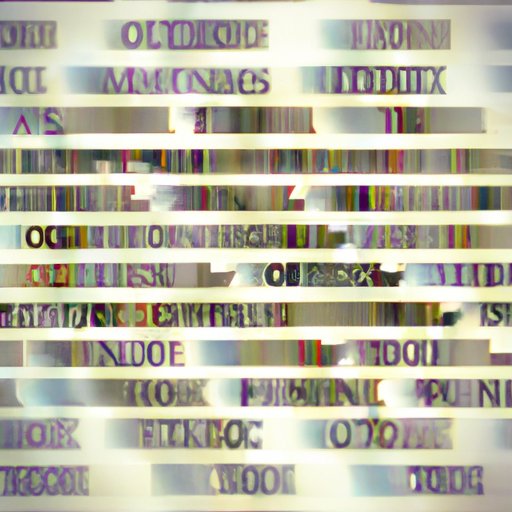Introduction
Postmodernism is an elusive concept that defies easy definition. Emerging in the late 20th century, postmodernism emerged as a response to modernism’s emphasis on reason, progress, and universal truths. Yet, postmodernism has been subject to both admiration and critique, with some critics labeling it as a nihilistic or relativistic movement. This article aims to explore the defining characteristic(s) of postmodernism and its cultural implications.
Deconstructing Postmodernism: Taking a closer look at its defining characteristic
At the heart of postmodernism lies the process of deconstruction. Coined by French philosopher Jacques Derrida, deconstruction involves “reading against the grain” of texts or systems to expose their hidden assumptions and contradictions. In postmodernism, deconstruction is used to subvert traditional notions of meaning, truth, and authority. According to postmodernism, all forms of language and communication are inherently unstable and open to multiple interpretations. Therefore, there is no one objective truth or reality.
Understanding Postmodernism through its challenging and ironic nature
Irony is another key feature of postmodernism. Postmodern artists, writers, and filmmakers often use irony to critique or subvert dominant cultural norms and values. Irony, in this context, involves the use of humor, sarcasm, or paradox to expose the contradictions and hypocrisies of modern life. This ironic style can be seen in postmodern artworks like Banksy’s graffiti, the films of the Coen brothers, and the writings of David Foster Wallace.
From Post-Structuralism to Postmodernism: The role of language in contemporary art
Postmodernism has its roots in post-structuralist philosophy, which rejected the idea of a fixed, transcendental reality. Instead, post-structuralists argued that reality is constructed through language and discourse. This philosophical shift had a profound impact on art and literature in the postmodern era. Postmodern artists often use language in unconventional ways, such as in the work of Jenny Holzer and Barbara Kruger. They create meaning through juxtaposing language, manipulating text, and playing with concepts, rather than relying on traditional artistic techniques.
Embracing the Fragmented Reality: Exploring the nature of subjectivity in Postmodernism
Another defining characteristic of postmodernism is its rejection of the idea of objective reality. In contrast, postmodernism emphasizes the fragmented, fluid, and subjective nature of experience. Postmodern artists and writers often use fragmented narratives, non-linear structures, and mixed media to capture the complexity of human experience. This style can be seen in works like David Lynch’s films, Cormac McCarthy’s novels, and Cindy Sherman’s photographs.
Postmodernism and the End of Grand Narratives: A critique of institutionalized knowledge
Postmodernism is also characterized by a rejection of grand narratives or meta-narratives – overarching stories that claim to provide a single, objective viewpoint on reality. Postmodernists argue that these narratives are culturally and historically specific, and cannot account for the diversity and complexity of human experiences. Rather than relying on grand narratives, postmodernists emphasize local and situated knowledge, grounded in the experiences of diverse communities. Postmodernism critiques institutionalized knowledge systems, like science, religion, or politics, as oppressive and limiting.
Postmodernism as a Reaction to Modernism: Re-defining the concept of art in the 21st century
Postmodernism can be seen as a reaction to the modernist emphasis on originality, purity, and progress. Modernists believed in the power of art to transform social and political structures through its revolutionary potential. However, postmodernism rejects this utopian vision and recognizes the limits of art as a means of social change. Instead, postmodernism embraces hybridity, bricolage, and pastiche, re-defining the notion of what counts as art or creativity. This shift can be seen in contemporary art forms like installation, performance, and interactive media.
Conclusion
In conclusion, postmodernism cannot be reduced to a single defining characteristic. Rather, it encompasses a range of aesthetic, cultural, and philosophical movements that challenge traditional notions of meaning, value, and identity. From the use of irony to the fragmentation of reality, postmodernism has redefined what counts as art and creativity in the 21st century. While it is subject to critique, postmodernism remains a vital and provocative force in contemporary culture. We invite readers to explore postmodernism further and draw their own conclusions about its value and relevance in today’s world.
